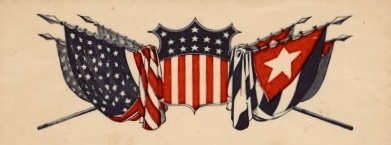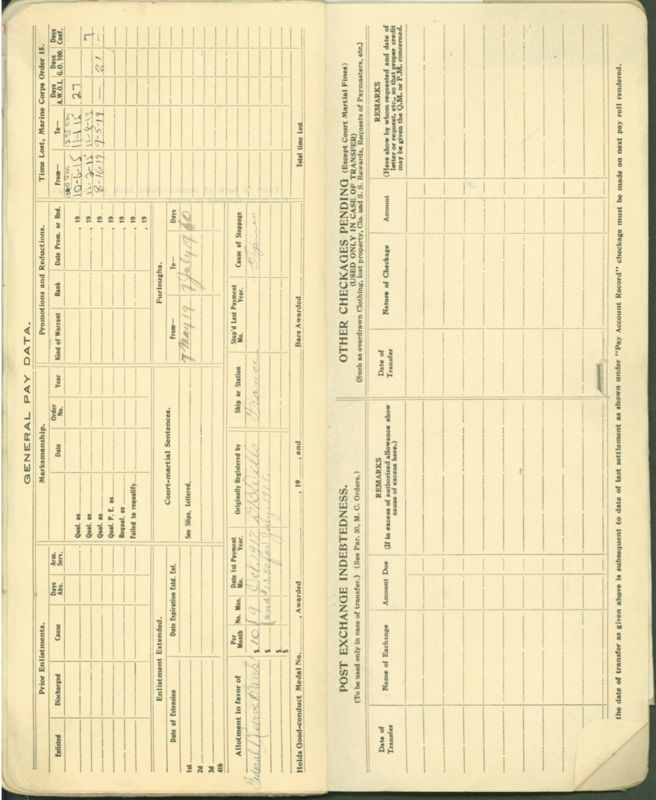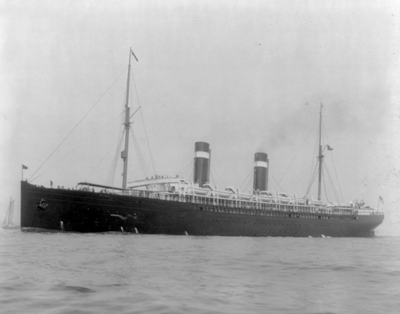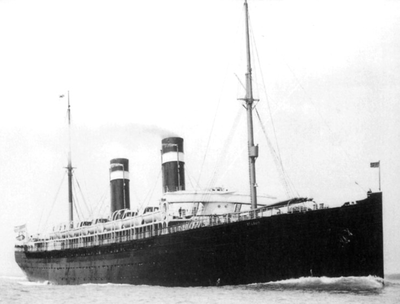1902 U.S. Mint Sampson Medal U.S.S. St. Louis
"A. Sydow F."
Fireman A. Sydow
A Partial Roster of the crew of the Auxiliary Cruiser ST. LOUIS During the Spanish American War
General:
The following is a partial roster of the Auxiliary Cruiser ST. LOUIS. The names, unless otherwise noted, are men who were crewmen aboard the oceanliner before she was pressed into service as an auxiliary cruiser and who decided to stay aboard as crewmen during her wartime service. They were mustered in as naval personnel.
Following names are the known naval ranks given these personnel, and their original rank in civilian service aboard the ship in the following format: (Naval Rank/Civilian Rank).
The Roster:
|
W. G. Randle (Commander/Captain)
T. G. Segrave (Lieutenant/Chief Officer) George E. Beckwith (Lieutenant J.G./ Senior Second Officer) George J. Luce (Lieutenant J.G./ Junior Second Officer) H. R. Campbell (Lieutenant J.G./ Extra Second Officer) W. A. F. Smith (Ensign/3rd Officer) J. H. Dungan James Jarvis J. R. Buchanan J. L. Anderson Thomas Crockett James Lindsay J. Washburn J. B. Wickersham F. J. Albrecht N. G. Grayson L. Hanson G. S. Hewes W. Sanders H. M.. Davie W. Howes R. T. Stockton John Sante John Donaldson Frank Poehler D. Abrahams J. H. Mcdonald Geo. Bartfield J. W. Cahill L. Schmidt H. Hansen W. Wynn B. Christensen J. Mahoney F. S. Taylor F. Fabian R. Lloyd Parker (Passed Assistant Surgeon/Surgeon) Thos. Kinsey (Passed Assistant Paymaster/Purser) R. H. Urquhart John Walls (Chief Engineer/Chief Engineer) William Joyce (Passed Assistant Engineer/Junior 1st Assistant) John Carstairs (Assistant Engineer/Senior 2nd Assistant) M. J. McGinn (Assistant Engineer/Junior 2nd Assistant) Samuel Round (Warrant Machinist/Extra 2nd Assistant) John Miles (Warrant Machinist/Extra 2nd Assistant) |
Vernon F. Preston (Warrant Machinist/Extra 2nd Assistant)
James Campbell (Warrant Machinist/Junior 3rd Assistant) A. Jeffrey (Warrant Machinist/Extra 3rd Assistant) James Lang (Warrant Machinist/Extra 3rd Assistant) William Burns A. Mcgregor John H. Shimmin John L. Brown C. Johnson Thomas Lennon L. W. James. George Birchall Robert Crane L. J. Nordlund Edward Walsh D. O'Brien Chas. Marquardt S. A. Macnamara William Dunn Daniel Brady James Marshall J Johnson J. Kieche J. Burke T. Quinn W. Doherty P. Donovan F. Mckei O. Mcdonald H. Eike M. Thornton H. Corbally F. Nelson R. Schultz G. Moran H. Schroder H. Bear E. Royer P. Goodwin T. Carr M. Griffin P. Morgan D. Devine A. Bomen John Ritchie P. Mayer A. Klein J. Molloy C. Mcelroy N. Pratt |
L. Venski
P. Rabe S. Buckhold H. Prigg R. Dehn O. Schulz C. Kohler C. Korblie J. Brown J. Mccabe F. Horner G. Devine D. Mcgreal J. Donnelly J. King John Donovan W. McGrath E. Schmidt J. Struckmeyer George Bell John Farrell Henry Hammond William Whittingham John Locke Bernard Haron George. Mooney Reuben Reeves E. Fulford Fred. Marsh Frank McDermott Percy Dobell John Menton David Evans Frank Holt Sydney Sanders George Maginni James Sloane George Ryder Louis Sasia Albert Turner William Wade Henry Hexam Henry Burrows John Neiser James Wright Henry Beattie Chas. Coombes William Connor Fred. Patterson Walter Collard Alfred Allen Percy Wilson Hans Spies Alfred Eyans |
S.S. Saint Louis (American Passenger Liner, 1895).
Served as USS Saint Louis in 1898 and as USS Louisville (ID # 1644) in 1918-1919
SS St. Louis, was a transatlantic passenger liner built by the William Cramp & Sons Building & Engine Company, Philadelphia and was launched on 12 November 1894; sponsored by Mrs. Grover Cleveland, wife of the President of the United States; and entered merchant service in 1895, under United States registry for the International Navigation Co., of New York with her maiden voyage between New York and Southampton, England. She was acquired by the United States Navy during the Spanish–American War and commissioned under the name USS St. Louis in 1898, and again during World War I under the name USS Louisville (ID-1644) from 1918 to 1919. After she reverted to her original name in 1919, she burned in 1920 while undergoing a refit. St. Louis was scrapped in 1924 in Genoa.
On a later voyage following the outbreak of the Spanish–American War, St. Louis was chartered for Naval service while at Southampton and returned to New York on 22 April 1898. Armed with four 5-inch rapid fire guns and eight 6-pounders, she was commissioned as an auxiliary cruiser in the United States Navy on 24 April, Capt. Caspar F. Goodrich in command. Manned by 27 officers and 350 men, she put to sea on 30 April for the Caribbean.
St. Louis was specially outfitted with heavy drag lines in order to destroy undersea cable communications in the West Indies and to the mainland of South America. On 13 May, she severed the cable between St. Thomas and San Juan; and five days later exchanged fire with the Morro Castle batteries at Santiago de Cuba as she cut the cable between that port and Holland's Bay, Jamaica. When Admiral Pascual Cervera's fleet sailed into Santiago Harbor, the Spanish warships found themselves cut off from direct communications with Spain.
St. Louis next severed the cable between Guantanamo Bay and Haiti; then cut the cable off Cienfuegos to isolate Cuba from outside communications. She joined in the bombardment of fortifications at Caimanera in Guantanamo Bay on 3 June; captured a Spanish merchant ship on the 10th; intercepted two British ships bound for Cuba - the Twickenham on 10 June and Wary on 1 July; and was present at the Battle of Santiago de Cuba on 3 July when the Spanish Fleet was destroyed while trying to force its way to sea.
St. Louis received many prisoners of war, including Admiral Cervera, for internment in the United States and landed them at Portsmouth, N.H., on 11 July. She steamed south from Norfolk on the 28th to cruise among ports of Puerto Rico and Cuba until 10 August; then sailed for New York where she arrived on the 14th. She shifted to Philadelphia on 24 August to enter the Cramp shipyard for preparation for return to her owners. St. Louis was decommissioned on 2 September and was turned over to Mr. J. Parker, a representative of the American Lines.





